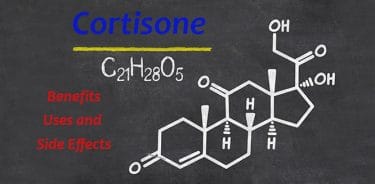Painkillers can relieve pain that occurs anywhere in the body. They have various kinds with different mechanisms of action depending on the source, duration and severity of the pain. Therefore, they should not be used without consulting a doctor, including for those without a prescription. They should not be given to anyone else. The doctor’s instructions for use of the drug should be strictly followed. Using these drugs unconsciously can lead to serious, even fatal consequences. Each painkiller has different side effects. Most of them can damage digestive systems. Stomach pain, ulcers, digestive system bleeding, stomach and intestinal perforation are among main common side effects. Painkillers should be used cautiously, especially in pregnancy and children.
Table of Contents
What is a painkiller?
A painkiller is a medication that relieves acute/chronic pain by acting on the central nervous system. It is also called analgesic in medical literature. There are many types of painkillers with different mechanisms of action depending on the source of the pain.
Depending on its capacity of pain relief and side effects, it can be provided over the counter or with prescription. It may be in the form of tablet, capsule, serum, suppository, gel or spray. There are also neuropathic medications that alleviate pain related to nerve damage by affecting the peripheral nervous system, which are not listed in the painkiller group. (1)
How to use painkillers?
Painkillers are safe and effective if the instructions are strictly followed. But, if taken unconsciously, they can have extremely dangerous and even fatal consequences.
- Do not use any prescribed or over-the-counter pain medication without consulting a doctor. Painkillers used without the doctor’s supervision can delay or make the diagnosis difficult by suppressing the pain.
- If over-the-counter painkillers are taken frequently, the effect of the drug gets weaker. Therefore, do not take them more than 10 days and more than 4 pills per day. If the pain persists, consult a doctor.
- Inform your doctor about your general health, medical history and prescribed and non-prescribed medications (including herbal supplements) you take.
- If you have an unexpected situation while using the medicine, see your doctor immediately.
- Never change the dose without consulting your doctor, because the dosage is adjusted according to the patient’s condition and intensity of the pain.
- Painkillers are prescribed individually. Because a painkiller that is good for someone may not be good for someone else, it may even cause harm. Therefore, do not share your medicine with others, do not also recommend it.
- Take them on a full stomach and with a glass of water in order to avoid any harm to the stomach.
- Do use the stomach protectors prescribed with painkillers.
It is not advised to use painkillers in every painful situation. You can get information from the doctor about non-drug treatments and recommendations (including quitting smoking, healthy eating, exercise, etc.), including some lifestyle changes.
When should you take painkillers?
Pain as a sign indicating that something is wrong in the body, is usually caused by a tissue damage. The pain may be mild, moderate or severe depending on the advancement of damage at the source of the pain. In addition, depending on its duration, the pain may suddenly develop and relieve in a short time (acute) or may last long (chronic). Hence, the function of painkillers is different.
The main uses of painkillers depending on the type of pain:
- Tension-induced headaches and migraine
- Urinary tract infection
- Menstrual pain
- Musculoskeletal pain
- Joint pain
- Rheumatic pains
- Birth pains
- Postoperative pain
- Cancer pain
- Injury pain
When should painkillers not be used?
Over-the-counter drugs such as aspirin containing especially acetylsalicylic acid should never be used in the following situations and conditions:
- High fever in children caused by chickenpox, flu and so on. (They may cause liver and brain damage -Rye syndrome-)
- Asthma and respiratory tract illness
- Gout
- Pregnancy
- Besides, ibuprofen should not be given to children under 6 months old.
Those who have to use them with caution (under the supervision of a doctor):
- Those who suffered stomach ulcer
- Patients with heart and blood pressure (They may increase the risk of heart attack and stroke.)
- People with bowel problems
- Asthma patients (They may increase the risk of attacks.)
- Children
- Pregnant women and breastfeeding mothers
- Patients older than 65 years of age
- Those with kidney and liver disease
- Those who are at risk for developing an allergic reaction to the main active ingredients in painkillers
- Smokers
- Those who use other medicines
Alcohol and painkiller
Alcohol can increase the side effects of painkillers and cause serious health problems. Therefore, alcohol or even food products containing alcohol are not recommended to take together with painkillers.
Types of painkillers
Non-steroidal anti-inflammatory drugs (NSAIDs)
Relieve pain (and fever) by reducing inflammation in the blood. They do not contain cortisone (steroids). Aspirin and ibuprofen are listed in this group. They are used for mild to moderate pain such as headache, injury, arthritis symptoms. (2)
Paracetamol (acetaminophen)
They increase the pain threshold of the body. They are used for mild to moderate pain such as headache, migraine, menstrual pain, toothache, pain due to influenza infections, and muscle-joint pain. (3)
Opioids (narcotic analgesics)
The most powerful painkillers. Codeine, tramadol and morphine are included in this group. They have the power of changing the pain messages in the brain. Opioids are often used for severe pain experienced by cancer patients. They can be prescribed with NSAIDs or paracetamol. (4)
Compound painkillers
Two different drugs are combined. They generally contain a standard analgesic such as paracetamol, aspirin or ibuprofen and a low-dose opoid such as codeine or dihydrocodeine. They are recommended when NSAIDs or paracetamol do not work or when stronger painkillers are needed.
Corticosteroids
Cortisone containing painkillers used in the treatment of musculoskeletal injuries. Also used to relieve pain caused by autoimmune diseases such as arthritis. (5)
Muscle relaxants
Reduces pain in tense muscle groups with its calming effect on the central nervous system. (6)
There are also medicines with pain relieving properties although their basic function is different. Non-analgesic drugs that relieve neurological pain by acting on the peripheral nervous system include:
- Some anticonvulsant (antiepileptic) drugs such as Lyrica
- Some antidepressants–anxiety drugs
Painkiller addiction
It is a kind of addiction that develops with unconscious use of painkillers without the supervision of a doctor and can be treated. To prevent this possibility:
- Use all painkillers (including aspirin) based on the doctor’s recommendation.
- Take painkillers only if the pain is severe.
- Use narcotic drugs with high addictive potential at doses and intervals as prescribed by the doctor.
- If you think that the effect of the painkiller is weak, inform your doctor and do not increase the dose by yourself. High doses can cause serious health problems.
- Keep narcotics in a safe place to prevent others from using them.
In addition, opoid painkillers can be used out of purpose as they produce euphoria that makes the patient feel good. Long-term use may cause drug addiction, even if the doctor’s instructions are followed. Besides, some narcotic painkillers that relieve cancer pain or other serious health problems are believed not to cause addiction.
Painkillers for severe pain
Opoids are the most powerful pain medication. Grading their pain relief power is based on their morphine content. Codeine is at the bottom of this group, and is usually prescribed with paracetamol to relieve pain caused by dental treatment.
At the top are hydromorphone (Dilaudid) and oxymorphone (Opana), which are stronger than morphine. The strongest of these drugs is fetanyl, which is administered intravenously, and is 70-100 times more effective than morphine.
Painkillers according to diseases
The main function of all painkillers is to stop the pain. However, because the action mechanism of each of them works differently, appropriate painkiller should be used depending on the source of the pain.
- Earache: May have many causes, including infection. For a short-term solution, a painkiller containing paracetamol and ibuprofen can be taken. Aspirin is another alternative, but should not be used in children.
- Kidney pain: The most common causes are urinary tract infections or kidney stones. The patient should go to the emergency room immediately and avoid over-the-counter medications. Depending on the cause of the pain, non-steroid NSAIDs or a drug from the opoid group if the pain is very severe may be prescribed.
- Hemorrhoids pain: One of the strongest from NSAID group, or from paracetamol group can be used. In addition, pain relief creams can be applied to the breech area. However, a medication not prescribed by a doctor should not be used.
- Cancer pain: A drug from NSAIDs such as aspirin may be used for mild pain. In severe pain, a drug from the opoid group is prescribed. In unbearable pain, opoid drugs can be administered intravenously or by placing a very small tube in the spine.
What is the safest pain reliever to use?
Paracetamol is the safest drug for use in infants and children during pregnancy and from birth. Also, it does not cause stomach irritation and side effects are not observed if used properly.
Side effects of painkillers
- Stomach ache
- Bleeding in the digestive tract
- Ulcer
- Stomach and intestinal perforation
Side effects of NSAIDs
- Diarrhea
- Headache or dizziness
- Feeling sick
- Numbness
- Risk of heart attack or stroke
Side effects of paracetamol
If you are allergic to this active ingredient found in some painkillers, a rash may develop. Other side effects are rare. However, it may cause liver damage if taken in high doses or with alcohol. It should also be used with caution (low dose) by those with kidney and liver problems.
Side effects of opioids
In the first use, they may cause drowsiness, dizziness and hypoventilation (respiratory depression), ie ineffective and slow breathing. However, these effects disappear over time.
Other possible side effects are:
- Constipation
- Addiction
- Euphoria, dysphoria, agitation, seizures, hallucinations
- Low blood pressure and heart rate
- Muscle stiffness and contractions
- Nausea and vomiting
- Non-allergic itching
- Pupil reduction
- Sexual dysfunction
- Urinary retention
Side effects of corticosteroids
Prolonged use may cause serious side effects. The most important are:
- Adrenal insufficiency
- Arteriosclerosis
- Bone death
- Cataract and glaucoma
- Hypertension
- High Blood Sugar
- Edema
- Mood changes
- Osteoporosis
- Suppression of the immune system
- Sleep problems
- Gaining weight
- Damage to local tissues
Side effects of muscle relaxants
The common side effect of all muscle relaxants is drowsiness. Depending on the type of muscle relaxant, side effects such as addiction, dry mouth, constipation, confusion and loss of balance may be observed.




